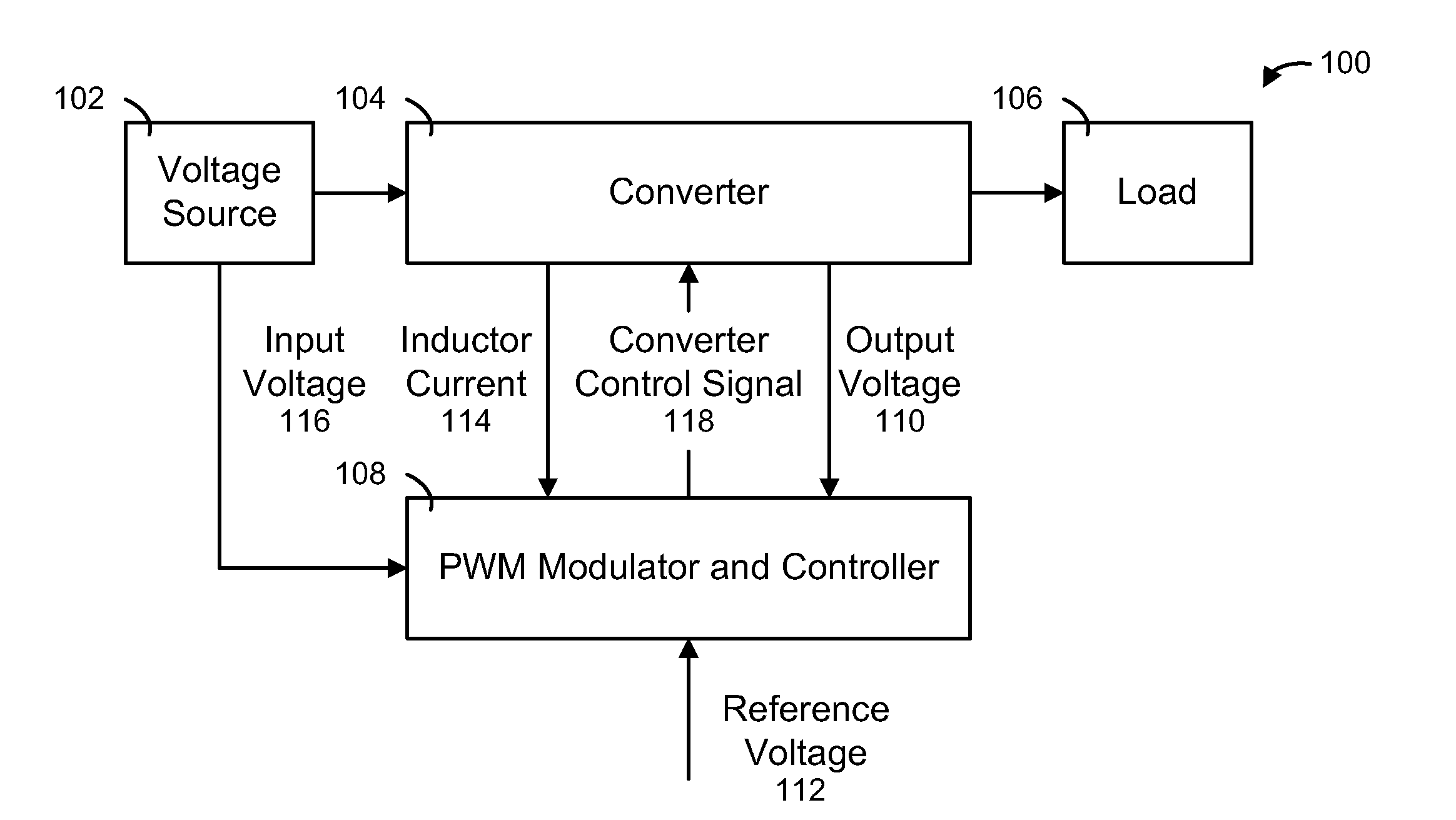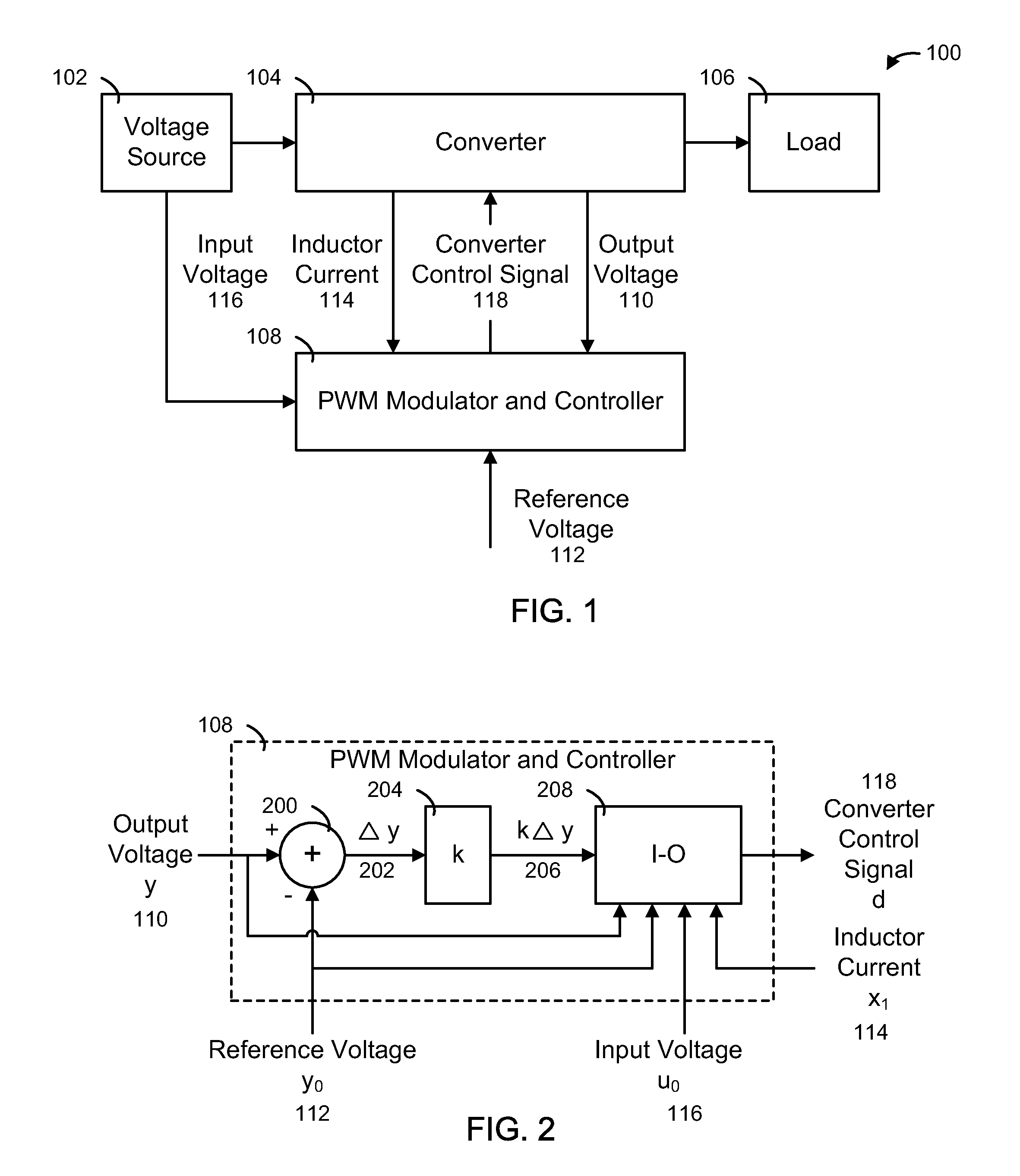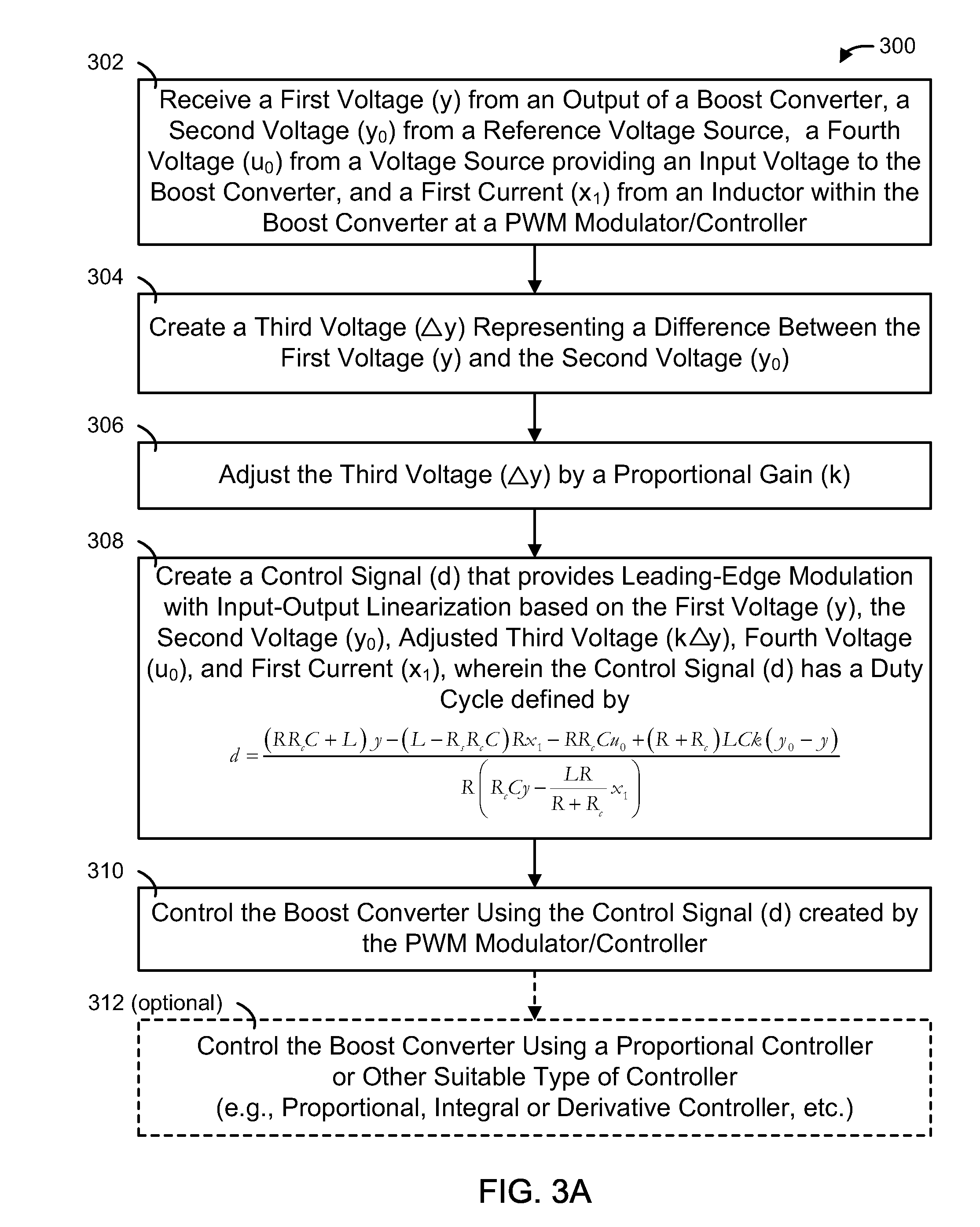System, method and apparatus for controlling converters using input-output linearization
a technology of input-output linearization and system, applied in pulse manipulation, pulse technique, instruments, etc., can solve problems such as unstable operating point, nonlinear operation of control loop, and difficulty in controlling system under these nonlinear effects, and achieve the effect of convenient implementation
- Summary
- Abstract
- Description
- Claims
- Application Information
AI Technical Summary
Benefits of technology
Problems solved by technology
Method used
Image
Examples
Embodiment Construction
[0027]While the making and using of various embodiments of the present invention are discussed in detail below, it should be appreciated that the present invention provides many applicable inventive concepts that can be embodied in a wide variety of specific contexts. The specific embodiments discussed herein are merely illustrative of specific ways to make and use the invention and do not delimit the scope of the invention.
[0028]The present invention provides a system, method and apparatus for controlling converters using input-output linearization that does not constrain stability to one operating point, but rather to a set of operating points spanning the expected range of operation during startup and transient modes of operation. In particular, the present invention uses leading-edge modulation and input-output linearization to compute the duty ratio of a boost converter or a buck-boost converter. The present invention can also be applied to other converter types. Moreover, the ...
PUM
 Login to View More
Login to View More Abstract
Description
Claims
Application Information
 Login to View More
Login to View More - R&D
- Intellectual Property
- Life Sciences
- Materials
- Tech Scout
- Unparalleled Data Quality
- Higher Quality Content
- 60% Fewer Hallucinations
Browse by: Latest US Patents, China's latest patents, Technical Efficacy Thesaurus, Application Domain, Technology Topic, Popular Technical Reports.
© 2025 PatSnap. All rights reserved.Legal|Privacy policy|Modern Slavery Act Transparency Statement|Sitemap|About US| Contact US: help@patsnap.com



